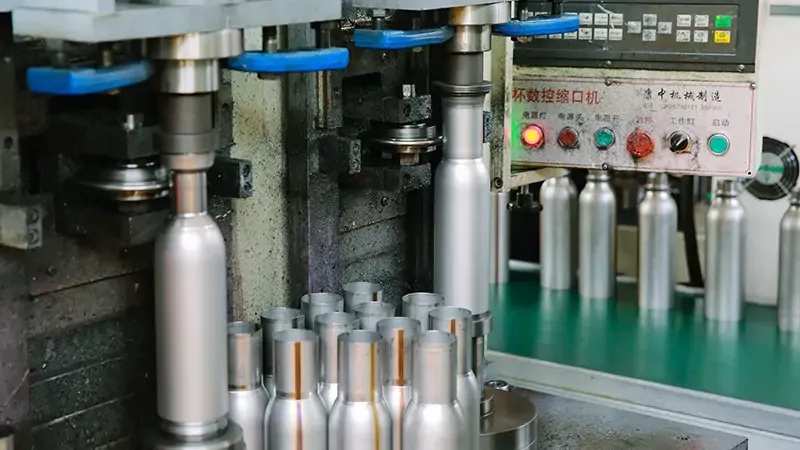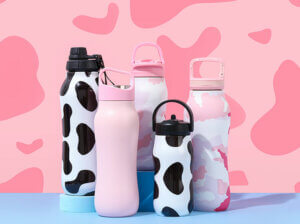Compare to plastic water bottles, vacuum insulated stainless steel water bottles are probably more popular on various occasions. Today we will show you a detailed introduction of the manufacture process of vacuum insulated stainless steel water bottles, so that you can easily understand.
Principle of Thermal Insulation
Generally, it is a water container made of ceramic or stainless steel with a vacuum layer. It has a cover on the top and is tightly sealed.
There are three ways of heat propagation: radiation, convection and transmission. The silver bottle inside the thermos can reflect the radiation of the hot water, the bottle and the vacuum can block the transfer of heat, and the bottle which is not easy to transfer heat can stop the convection.
This is why insulated water bottles can keep the beverage hot or cold for a long time.
Raw materials
Currently, there are three commonly used stainless steel materials:
1. S201: Due to the high content of manganese, the material of 201 is easy to rust. In terms of corrosion resistance, it is much worse than 304, and the price is much cheaper.
2. S304: 304 stainless steel is the most common and most widely used stainless steel material, not easy to rust, good quality, the price is relatively high.
3. S316: 316 stainless steel is an imported material, used in some high-end products, such as aerospace, food machinery, medical and other fields, the price is high.
Manufacturing Process
1. Pipe cutting: cut the raw material into appropriate length.
2. Water expansion: stainless steel pipe is the raw material of this method. First, place the stainless steel tube on the water expander. The pipe expands into a bottle under enormous pressure. In this way, the resulting bottle has no bottom, so a round stainless steel plate is welded to it to form a complete bottle.
3. Separating: cut off the two shells after water expansion with the instrument cart.
4. Positioning and shapping: using a large press, you can get the outer bottle you want, and ensure that the pits, size and shape of the outer bottle meet the requirements.


5. Impact reinforcement: In a small press to the shell of the welding joint at the mouth of the flat, in the welding joint will not jump welding, so that the welding joint smooth and even.

6. Necking: use the machine to squeeze the top of the bottle and shrink the mouth.

7. Flat mouth and bottom: Cut the excess part of the mouth and bottom.

8. Thread rolling: With special thread machine, adjust thread depth to meet the size requirement.


9. Ultrasonic cleaning and drying: The inner and outer bottles are cleaned and dried.
10. Assembly: Assemble the inner and outer bottles with the round bottom.
11. Weld the bottom and top of the bottle

12. Vacuuming: Using the tailless vacuum technology of the machine, the vacuuming standard shall be strictly followed. A vacuum is formed between the inner tank and the outer bottle, thereby preventing heat transfer, providing insulation and preventing hot hands.

13. Water leakage test: Check whether the welding of the inner and outer bottles is in good condition, and eliminate the unqualified products.
14. Electrolysis: Through the interaction between the current and the electrolyte, the microscopic geometry of the metal surface is improved, and the roughness of the metal surface is reduced, so as to achieve the goal of making the surface of the stainless steel bottle smooth and bright. The surface of the inner bottle is bright and uniform, without watermarking and yellow spots.
15. Temperature measurement: Vacuum insulation test: put the hot air into the bottle, if the outer layer is cool, the hot air will not transfer, and the water bottle has the effect of insulation.

16. Surface treatment (plastic spraying table, plastic spraying line) : powder coating and spraying.

17. Patterns and logos: Use a variety of techniques to print pattern designs and logos on bottles – screen printing, thermal transfer, water transfer, laser etching, etc.
18. Packaging





